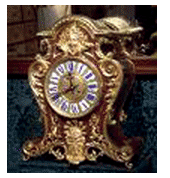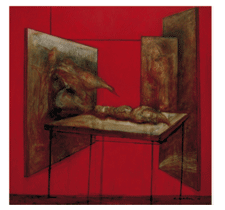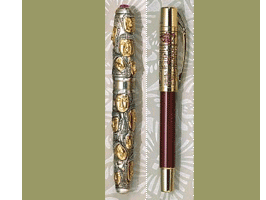- Ah, the heat
- Guest Editor’s Column
- Art Moderne: Art Deco Furniture
- Lithograph Tin Toys
- Film Memorabilia
- Creative Impulse
- Hard Talk
- Possibility of Democracy in China
- In the News
- Artist Index and Statistics
- Market Insight
- Auction Reports : What happened
- Auction Reports : what's forthcoming
- Art Bengaluru
- Art’s Eye-view
- The month that was
- Photo Feature
- Roerich bridges Indo-Russian Cultural Relations
- Image and Symbol: Painters' Perceptions
- Image and Symbol: Sculptors' Perceptions
- My Window Shut to Open
- Paramjit Singh
- Mrinalini Mukherjee
- The Spirit of A Butterfly
- Have I Ever Opposed You?
- S(outh) E(ast) A(sia)
- Splitting the Other
- The Things That Happen When Falling in Love
- Millijunction
- Terminology
- Know your Act
- Different hues of Aakriti
ART news & views
Terminology
Volume: 2 Issue No: 3 Month: 4 Year: 2010
| There are certain terminologies which we are acquainted with but we don't have a clear idea or definition about them. Art news & views offers some of these terminologies for its readers to understand the terms better. |

Antique: The word antique has been derived from the Latin word antiquus which means a decorative object that is valuable because of its age. Antiques are collected because of their rarity as they represent a preceding era in the human society. Mostly, the antiques show some level of craftsmanship. Any item including furniture, automobiles, glass, porcelain, clocks etc. is considered as antique if it is 50 to 100 years old and sought after due to its rarity, condition, efficacy or some other unique feature.

Antiquity: Antiquity is an object from distant past found due to excavation processes led by archaeologists. The objects are generally ancient. The Mediterranean, Greek, Roman, and Egyptian civilizations housed all these precious objects. The meaning of the term is not always accurate and traditional definitions frequently cover later periods. The word, antiquity, was first found in England, 1513. Murals, terracotta, stone carvings, arms are some examples of antiquity.
Art: It is the procedure or product of premeditatedly arranging components in a way that demands to the senses or emotions. It includes an assorted range of human actions, creations and forms of expression, including music, literature, films, sculptures, and paintings.  The connotation of art is revealed in a branch of philosophy known as aesthetics. The definition and valuation of art has become particularly problematic since the early 20th century. Art can be distinguished in three parts : the Realist, where the aesthetic quality is a supreme value autonomous of any human vision; the Objectivist, where it is also a total value, but is dependent on general human experience; and the Relativist position, whereby it is not an absolute value, but depends on and varies with, the human experience. Art is intended to be appreciated primarily or solely for its aesthetic content.
The connotation of art is revealed in a branch of philosophy known as aesthetics. The definition and valuation of art has become particularly problematic since the early 20th century. Art can be distinguished in three parts : the Realist, where the aesthetic quality is a supreme value autonomous of any human vision; the Objectivist, where it is also a total value, but is dependent on general human experience; and the Relativist position, whereby it is not an absolute value, but depends on and varies with, the human experience. Art is intended to be appreciated primarily or solely for its aesthetic content.
Conventionally, the term art was used to refer to any proficiency or mastery. This notion changed during the Romantic period, when art was seen as "a special faculty of the human mind to be classified with religion and science". Usually, art is created with the objective of inspiring thoughts and feelings.

Collectible: Any item which has been produced after 1920 and is desired for various reasons is a collectible. Stamps, coins, works of art, pens, watches, toys, post cards, camera, lighter, advertising sign, comic books, perfume bottles etc. are the most important things which are considered as collectibles. The most primitive collectibles were included as inducements with other products, such as cigarette cards in packs of cigarettes.
 Curio: Curio is a rare, unusual or intriguing object. Sometimes a curio comes with an interesting history or it evokes a sense of rarity among the people who appreciate it like objects used by famous personalities as Gandhiji's spectacles, J.F. Kennedy's watch or Michael Jackson's glove. Porcelain figures, plates, crystal wares and many such decorative objects are good examples of curios. In some cases they are displayed in curio cabinets which contain many such objects.
Curio: Curio is a rare, unusual or intriguing object. Sometimes a curio comes with an interesting history or it evokes a sense of rarity among the people who appreciate it like objects used by famous personalities as Gandhiji's spectacles, J.F. Kennedy's watch or Michael Jackson's glove. Porcelain figures, plates, crystal wares and many such decorative objects are good examples of curios. In some cases they are displayed in curio cabinets which contain many such objects.

Handicraft: A craft made skilfully, primarily by hand. This actually refers to the traditional ways of making articles. The kind of craftsmanship of the individuals is important for making the handicrafts attractive. Brass wares, statues & wood carvings etc. are some examples of handicraft. Things made by machines are not considered as handicraft.

Vintage: An item described as 'vintage' should speak of the era in which it was produced. Vintage should always be emblematic or identifiable to a certain era. A vintage object should be more than 20 years of age. Wine, automobiles, equipment, telephone, radio, typewriter, jewellery, bakelite objects, gramophone, cinema posters are some of the examples of vintage.